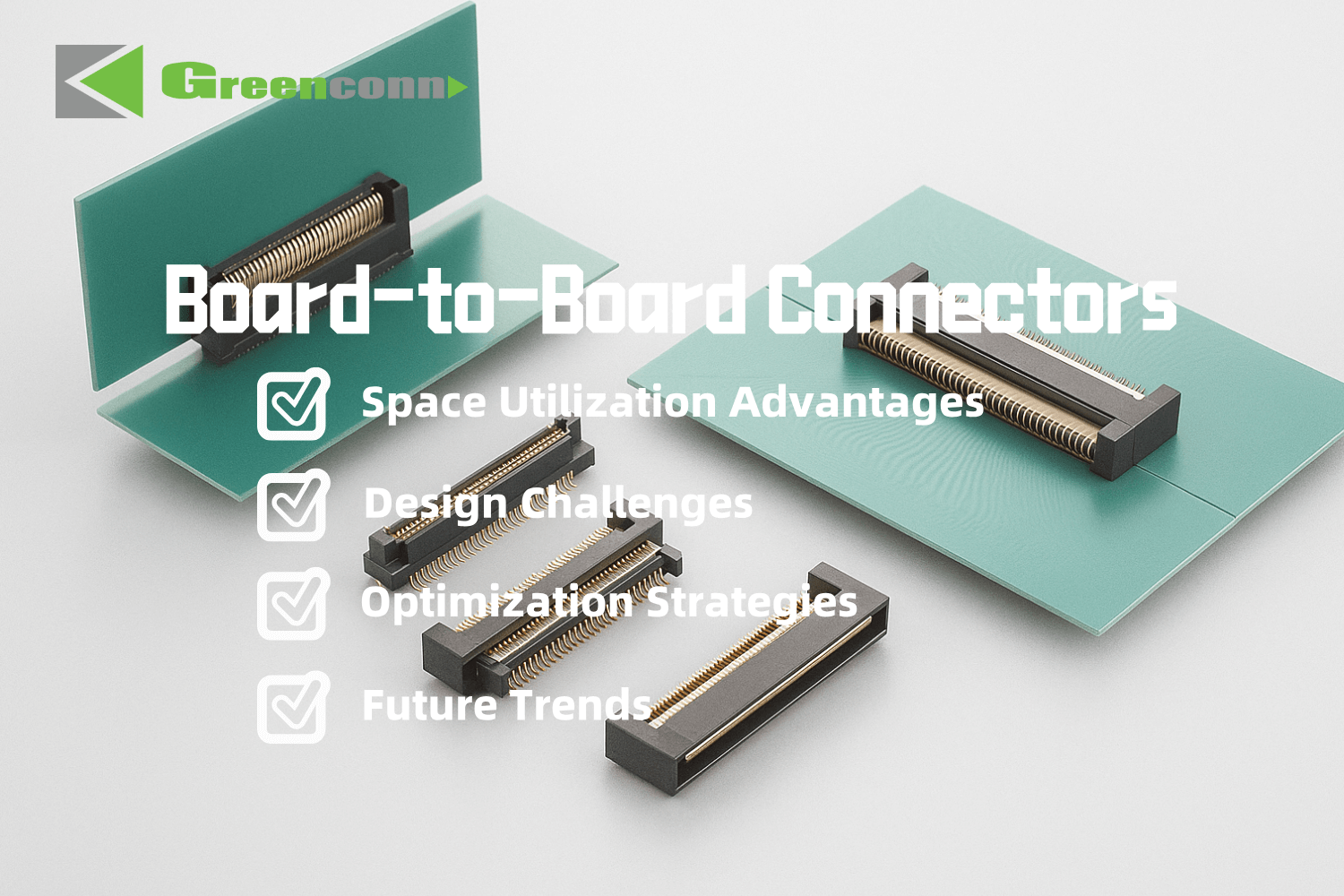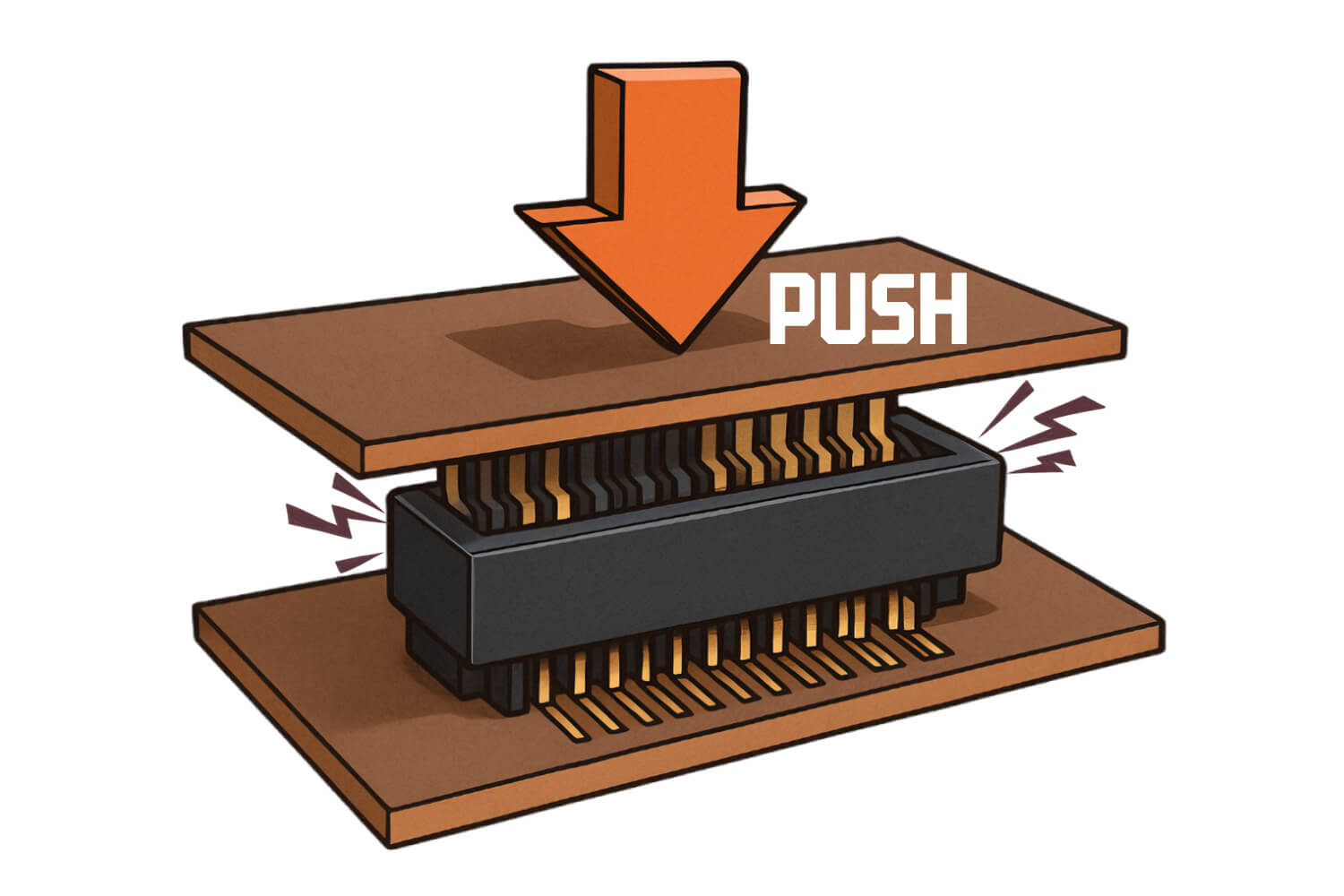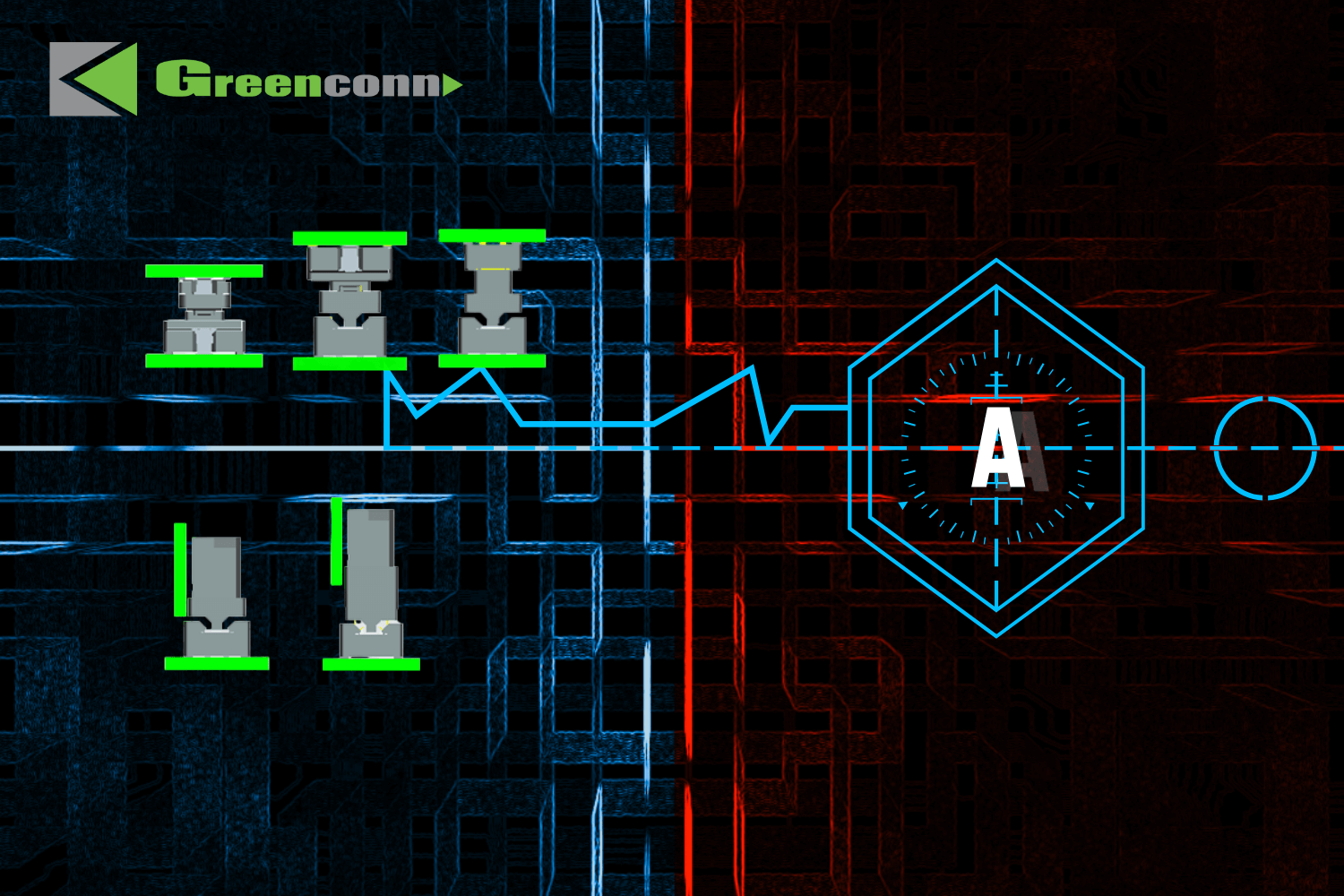Board-to-Board Connectors in Compact PCB Designs: Advantages and Engineering Challenges
As electronic devices evolve toward thinner profiles and higher integration levels, the efficient utilization of internal PCB space has become a critical factor in product design success. Achieving reliable and high-performance signal and power transmission within limited space remains a major challenge for engineers.
Board-to-board (BTB) connectors, with their compact structures and robust reliability, have emerged as an ideal solution for high-density interconnections.

1. Space Utilization Advantages of Board-to-Board Connectors
Board-to-board connectors enable direct vertical or parallel connections between two or more PCBs, minimizing the space traditionally occupied by cables and solder joints while optimizing overall structural layout. Their engineering advantages include:
• Compact design with high space efficiency
Vertical or parallel mating configurations allow for high-density signal transmission within millimeter-level spacing.
• Shorter signal paths, enhanced stability
By eliminating intermediate wires, BTB connectors reduce impedance discontinuities and reflection risks, improving overall signal integrity.
• Modular assembly and automation-friendly
Their standardized design supports modular system architecture and automated assembly, enhancing production consistency and maintenance efficiency.
2. Design Challenges in Confined PCB Layouts
While board-to-board connectors greatly improve space utilization, compact environments pose several engineering challenges:
• High precision requirements for fine-pitch assembly
As pitch sizes shrink to 0.5 mm or even 0.35 mm, minor deviations can cause soldering defects or short circuits, demanding tighter manufacturing tolerances.
• Complex signal integrity and EMC control
In high-speed applications, asymmetric layouts or uneven routing can cause crosstalk and impedance drift—issues that require simulation-based optimization.
• Thermal management and mechanical stress
Compact layouts can lead to localized heat accumulation and repetitive insertion stress, which may cause terminal fatigue or deformation, affecting connection reliability.

3. Optimization Strategies for Compact Designs
By combining board-to-board and mezzanine design approaches, several optimization strategies have been developed for compact space utilization—widely applied in consumer electronics and automotive systems.
• Miniaturization and fine-pitch design
Through miniaturized structures (e.g., Greenconn fine-pitch plug connectors), engineers can increase connection density within limited PCB area.
• Flexible interconnects and spatial reuse
Incorporating FPC/FFC flexible cables (such as Greenconn FFC connectors) enables cross-layer signal routing and space reuse, simplifying cable management.
• Misalignment prevention and guide features
Anti-mismating and guide structures (e.g., Greenconn high-speed connectors series) reduce manual assembly errors and enhance terminal reliability.
• Thermal management and material engineering
Using high-temperature LCP materials and high-conductivity terminals (brass preferred over bronze) improves heat dissipation and minimizes thermal stress accumulation.
• Balancing performance and size
To compensate for current capacity limits in miniaturized designs, multiple pins can be paralleled or combined into hybrid layouts—such as Greenconn floating connectors series featuring integrated power and signal pins.

(Greenconn floating connector series)
4. Future Trends in Board-to-Board Interconnects
The design of board-to-board connectors extends beyond structural optimization—it represents a comprehensive system balancing signal integrity, thermal performance, and manufacturability.
With the rapid development of 5G, AI computing, and industrial intelligence, BTB connectors are evolving toward smaller pitches, higher data rates, and smarter self-detection capabilities.
Leveraging decades of experience in precision interconnect technology, Greenconn continues to advance connector innovation through material research and structural engineering—delivering high-frequency, low-power BTB solutions that empower global customers to unlock greater performance within limited space.



